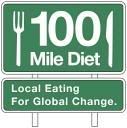Food Science 101 - Browning
One of the highlights of the USPCA National Conference in Atlanta was the keynote speaker of the first day luncheon, Shirley Corriher. Shirley is the author of the "everything you ever wanted to know about food and food science" tome - CookWise. Along with some hilarious anecdotes about some of her many cooking misadventures and TV appearances, she shared some of her recent articles. This is a brief article she gave out regarding browning:
Browning - The Maillard Reactions
Caramel -- Great flavors
When table suger (sucrose) reaches very high temperatures (over 300°F), it melts, then starts to caramelize (decompose) -- different sugars are formed, sugars break apart, some of these rejoin. At any given moment between clear melted sugar and dark caramel, there is a different mixture of sugars. Over 128 different sugars have been identified. Many of these are brown and have the wonderful taste that we associate with caramel.
The Maillard reactions are a series of complex reactions that rpoduce, at much lower temperatures, the same sweet brown compounds that you get in caramel plus many others. Everythig from toast to fried foods and roast gets this rich-tasting brown coating from these complex reactions of certain sugars and proteind caused by heat.
THREE THINGS THAT YOU NEED FOR BROWNING: PROTEINS, certain sugars (Reducing Sugars), and a NON-ACIDIC ENVIRONMENT. Acids prevent browning. But, with low acidity, the more reducing sugars (sugars with a certain shape) and protein in a product, the browner it gets.
CERTAIN SUGARS (reducing sugars) like glucose (corn syrup) ENHANCE BROWNING. If you substitute as little as one tablespoon of corn syrup for a tablespoon of sugar in a cookie recipe, you will get cookies with a remarkably browner, crisper surface. If you baste a turkey or roast chicken with something that has sugar and protein it will get much browner than one basted with oil. My favorite basting combination is a little corn syrup (for the fast browning glucose), butter (which contains both sugar and protein from milk), and consomme (clarified beef stock and gelatin). Both the stock and the gelatin contain proteins to aid in browning. Browning the meat at the end of the cooking instead of the beginning as is usually done produces fast browning. Because juices containing protein and sugar have come to the surface and evaporated at the end of the cooking time, there is considerably greater concentration of surface sugar and protein. Now, with an elevated temperature, browning occurs rapidly.











1 Comments:
Awesome blurb on browing.. its great to get a sense for why one wants to baste at the end.
We homeschool and did a project on the Maillard and other reactions (you can see that here http://progressive-homeschool.blogspot.com/2005/09/maillard-reaction-supper-too.html)
I also do food photography (http://nikas-culinaria.blogspot.com) so am very interested in your informative posts (its more inspiring than the many recipes with little else found on many blogs).
Am going to set my puter up to try our your podcasts too, perhaps Something like would be of use to us in our homeschooling or my food blog.. never know!
Thanks for you site!
Post a Comment
<< Home